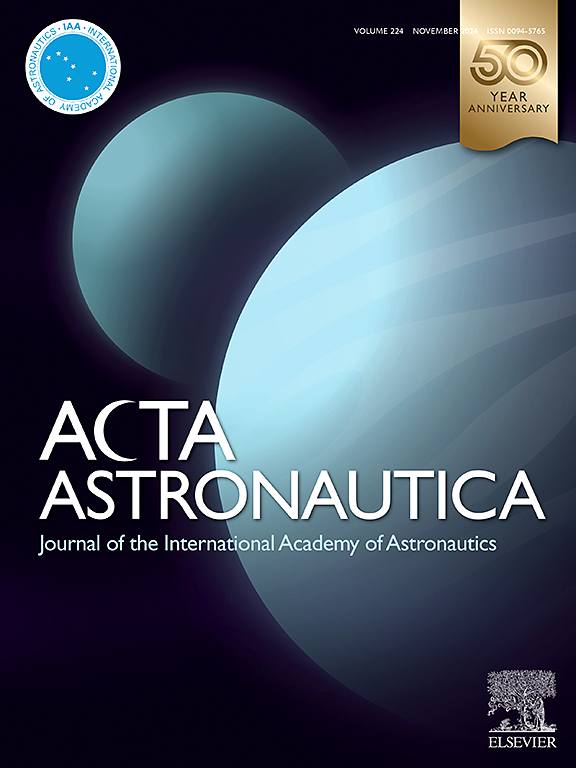应用EVDT系统工程框架和卫星地球观测数据绘制加纳可持续发展目标15指标
IF 3.1
2区 物理与天体物理
Q1 ENGINEERING, AEROSPACE
引用次数: 0
摘要
卫星地球观测数据可以提供资源,协助国家统计部门编制数据,支持通过自愿国家审查报告可持续发展目标(SDG)指标。许多国家统计部门传统上依靠地面调查作为主要的数据收集方法。若干可持续发展目标指标,包括可持续发展目标13(气候行动)、可持续发展目标14(水下生命)和可持续发展目标15(陆地生命),可以通过使用卫星对地观测数据来促进实现。采用非传统数据源进行可持续发展目标报告的过程需要具有统计学、经济学、遥感、地理空间数据管理和调查方法背景的跨学科团队之间的协作。本研究提供了一个合作团队的经验,该团队包括来自加纳统计局、加纳空间科学与技术研究所的领导人和一个美国学者团队,他们将卫星地球观测数据用于绘制SDG15的几个指标。这项工作还包括展示测绘土地覆盖变化和采矿造成的森林砍伐的方法。研究表明,采用一套称为系统架构和EVDT(环境-脆弱性-决策技术)的系统工程框架,促进了不同背景的专家之间的合作,并为将科学分析转化为政策相关发现提供了地图。该方法采用定性访谈、实地访问、现场数据收集、卫星对地观测数据分析和软件开发相结合的方法。调查结果表明,加纳政府为支持正在进行的可持续发展目标自愿国家报告而提高了能力。本文章由计算机程序翻译,如有差异,请以英文原文为准。
Applying the EVDT Systems Engineering Framework and satellite Earth Observation data for mapping SDG15 indicators in Ghana
Satellite Earth Observation data can provide a resource to assist national statistical services as they compile data in support of reporting on the Sustainable Development Goal (SDG) Indicators via Voluntary National Reviews. Many national statistical services have traditionally relied on ground-based survey as the primary data collection approach. Several SDG Indicators, including SDG13 (Climate Action), SDG14 (Life Below Water) and SDG15 (Life on Land), can be facilitated by the use of satellite-based Earth Observation data. The process of adopting nontraditional data sources for SDG reporting requires collaboration among interdisciplinary teams with backgrounds in statistics, economics, remote sensing, geospatial data management and survey methods. The present study provides the experience of a collaborative team including leaders from the Ghana Statistical Service, the Ghana Space Science and Technology Institute and the a team of US-based scholars to apply satellite Earth Observation data for mapping several SDG15 Indicators. The work also includes a demonstration of methods for mapping changes in land cover and deforestation due to mining. The works shows that the adoption of a set of Systems Engineering Frameworks called Systems Architecture and EVDT (Environment-Vulnerability-Decision-Technology) facilitate the collaboration among experts from different backgrounds and provides a map for the translation of scientific analysis into policy-relevant findings. The methods use a combination of qualitative interviews, field visits, in-situ data collection, analysis of satellite Earth Observation data and software development. The findings demonstrate an upgraded capability adopted by the government of Ghana to support ongoing SDG Voluntary National Reporting.
求助全文
通过发布文献求助,成功后即可免费获取论文全文。
去求助
来源期刊

Acta Astronautica
工程技术-工程:宇航
CiteScore
7.20
自引率
22.90%
发文量
599
审稿时长
53 days
期刊介绍:
Acta Astronautica is sponsored by the International Academy of Astronautics. Content is based on original contributions in all fields of basic, engineering, life and social space sciences and of space technology related to:
The peaceful scientific exploration of space,
Its exploitation for human welfare and progress,
Conception, design, development and operation of space-borne and Earth-based systems,
In addition to regular issues, the journal publishes selected proceedings of the annual International Astronautical Congress (IAC), transactions of the IAA and special issues on topics of current interest, such as microgravity, space station technology, geostationary orbits, and space economics. Other subject areas include satellite technology, space transportation and communications, space energy, power and propulsion, astrodynamics, extraterrestrial intelligence and Earth observations.
 求助内容:
求助内容: 应助结果提醒方式:
应助结果提醒方式:


